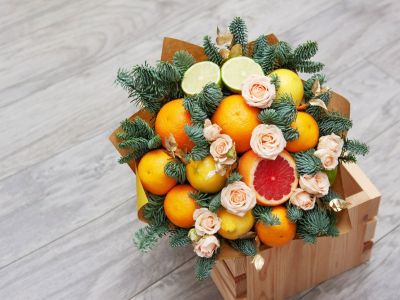While flower only arrangements are beautiful in their own right, why not explore more non-traditional options – such as fruit and flower arrangements. They can even make great gifts for others.
Fruit in Flower Arrangements?
The arrangement of fruit and flower bouquets can be quite unexpected. While the concept of fruit in flower arrangements is not new, creative-minded florists are now using these “ingredients” in exciting ways, and so can you. The addition of fruits and vegetables can offer drama, texture, and a truly unique perspective. Fruit and flower arrangements are known for their elegance, as well as the ease to which seasonal colors and elements may be used in décor.
Arranging Fruit and Flower Bouquets
Fruit tree branches, fruits, berries, and vines are among the most commonly used plant pieces when arranging flowers with edibles. While larger fruits can serve as focal points within arrangements, smaller parts may be better suited to framing or creating a light and airy appearance. Beyond fruit in floral arrangements, one may also consider the use of garden vegetables and herbs. Many different vegetable types offer interesting shapes and a wide range of color. An array of garden herbs may also be useful as filler and foliage plants. The bright, burst of scent offered by herbs is an excellent way to add appeal to arrangements. Fruit and flower bouquets will have many special considerations. Foremost, it will be important to remember that edible arrangement plants may behave differently than their floral counterparts. Those creating arrangements should consider whether or not the parts will wilt quickly, if the fruits will discolor, and how quickly they may rot. Certain types of fruit, like those which produce ethylene gas, may even shorten the length of flower vase life. Preparing fruit in flower arrangements is fairly simple. After cutting long stems from the garden, remove any excess foliage that will fall below the water level of the vase. Arrange the fruits, vegetables, and branches with flowers, making certain that each stem is secure. Large pieces may benefit from additional structural supports to ensure that plant stems do not fall or break.
